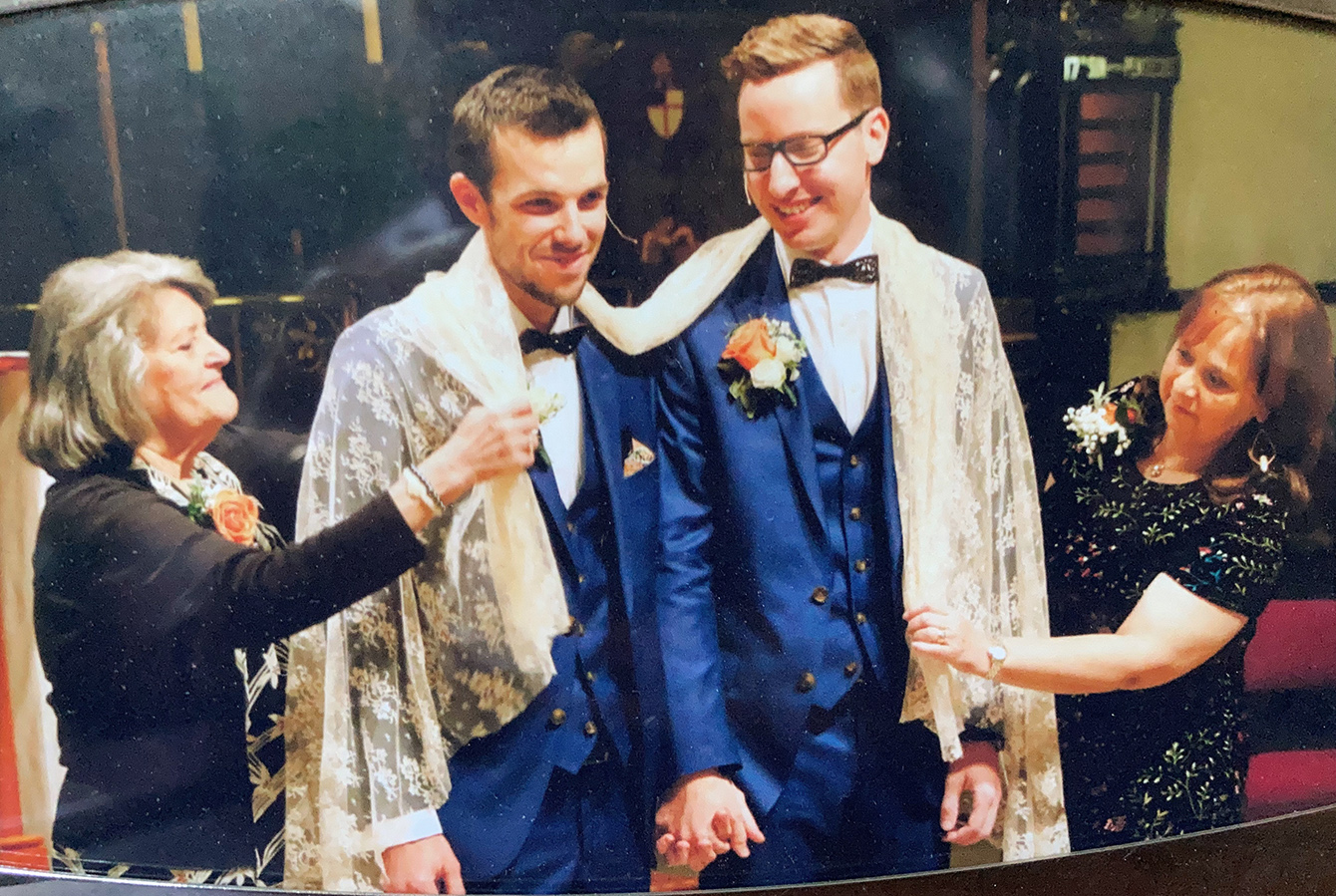Why does a piece of handmade lace mean so much to me? I wish I could show you a close-up picture of the beauty, precision and intricacy of the handiwork, complete with its imperfections.
I had hoped to take photos when I had it in my hands for my middle son’s wedding. But it never made it into my hands. Others felt its power as well, and they withheld it.
My son and his fiance had asked my husband and me for input while planning their wedding liturgy. We took turns reading aloud possible Scripture passages, letting their meaning seep into us. We considered rituals and symbols and various ways to involve others important in their lives.
To my surprise, my husband suggested that they might consider using the family mantilla (pronounced man-TEE’-yuh) during the closing nuptial blessing.

I have pictures of the long lace shawl covering my mother’s head and father’s shoulders in 1941, held over my husband and me some 40 years ago at our wedding, and used by my oldest son and his wife, as well as many other family members over the years, to tangibly manifest God’s uniting blessing.
“We’ll consider it,” they said. They pondered for a time before deciding to incorporate it into their ceremony, grateful to include this cultural and family tradition and uniting symbol.
They asked me to send some written background to describe the mantilla for their wedding program. I agreed, but it was not an easy task.

Neither the two tías (aunts) left from my parents’ generation nor my sisters and cousins knew much more about it than I. We suspected the mantilla to be from a Spanish Catholic tradition continued by families like ours in Cuba.
An internet search for images yielded only one poor-quality photo, although pictures and descriptions of the similarly uniting lazo, used in many Mexican American weddings, abounded.
I continued to dig. The influence of Jewish faith and practice in many parts of Spain made me think that perhaps the mantilla wedding shawl had roots in the Jewish wedding canopy.
I learned that the chuppah, or wedding canopy, is a “tallit [prayer shawl] ... draped over the couple or held above them.”
“The single cloth under which the couple are joined thus symbolizes both the new household they are forming and … the public recognition of their new status” as united in marriage.
Some teachers in talmudic passages emphasize that the canopy is a tent “open to wayfarers,” a representation of the new home filled with chesed (acts of love) and hospitality to strangers. It is open. It invites community. The couple blessed under this single cloth are reminded “that they are protected by God alone and that God is their only haven and support.”
It seems that the mantilla wedding tradition has its roots in very early Christian practice, especially in communities in the Iberian Peninsula that remained part of synagogues for many years.
Just as the Jewish wedding liturgy had two parts, so the Christian ceremony developed two parts. The prayer shawl-turned-lace mantilla in the Spanish Catholic wedding mass became a prominent symbol in the second and closing ritual known as the misa de velación — literally, from the Latin, the “covering with a veil.”
I was delighted to encounter the Sephardic roots and rich symbolic meaning.
I shared these discoveries enthusiastically with my son and his future husband, and they chose parts to include in the program of their wedding liturgy.
It was very close to the wedding day when we learned that the keeper of the family mantilla (used in the Cuban diaspora here in the U.S.) did not deem this marriage worthy of the mantilla and so withheld it, rejecting the fervent pleas of even my son’s godmother, a well-known practical theologian and minister in the family.
I give thanks that another aunt produced lace fabric we were able to use. This fabric was not handmade, but we blessed it with our love and tears, and it proudly served to symbolize the inclusive, radical grace we perceive to be alive and active in the faith and commitment of the two young men whose shoulders it covered.

Like the keeper of the diaspora mantilla in my family, many churches currently withhold the recognition of sanctity in gay marriage and continue to wound queer Christians seeking a safe space to grow and serve others in the Christian community.
I hope the image of the community of faith praying over my son and his husband under the mantilla of God’s grace will console and strengthen other queer couples seeking tangible manifestations of their status as beloved of God, called and missioned to extend the tent of hospitality and healing spiritual power through the witness and warmth of their joined lives.















